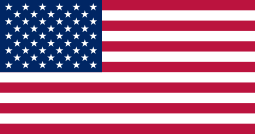The Difference Between Original Japanese Usui Reiki and Western Reiki
The original Japanese Usui Reiki Ryoho has evolved gradually since it was first introduced to Hawaii, then to the mainland United States, and eventually to the rest of the world. Over time, Western Reiki developed with a variety of philosophies and techniques, and it was introduced to Japan in the late 1980s.
Western Reiki differs significantly from the original Japanese Usui Reiki. The traditional Japanese Usui Reiki maintains a specific approach, philosophy, and set of protocols that have been carefully preserved and passed down through generations within Japan. In contrast, Western Reiki is more varied. While some groups strive to uphold traditional practices, others adapt them freely, with some striking a balance between the two.
Both the original Japanese Usui Reiki and Western Reiki offer valuable benefits. In traditional Japanese Usui Reiki, it is believed that illness is caused by negative energy. A practitioner begins a session by identifying and removing this negative energy through Reiki. Following this, the practitioner uses Reiki to elevate the recipient’s spirituality, ensuring they no longer resonate with negative energy. The goal is to continuously raise one's vibrational frequency, promoting a peaceful and abundant life.
Western Reiki, on the other hand, integrates with modern medicine, often used as a complementary therapy. It has proven effective in improving both the mind and body of patients, supporting overall well-being.
A Diferença Entre o Usui Reiki Japonês Original e o Reiki Ocidental
O Usui Reiki Ryoho japonês original evoluiu gradualmente desde que foi introduzido no Havaí, depois no continente dos Estados Unidos e, eventualmente, no resto do mundo. Com o tempo, o Reiki ocidental se desenvolveu com uma variedade de filosofias e técnicas, e foi introduzido no Japão no final da década de 1980.
O Reiki ocidental difere significativamente do Usui Reiki japonês original. O Usui Reiki japonês tradicional mantém uma abordagem, filosofia e conjunto de protocolos específicos que foram cuidadosamente preservados e transmitidos por gerações no Japão. Em contraste, o Reiki ocidental é mais variado. Enquanto alguns grupos se esforçam para manter as práticas tradicionais, outros as adaptam livremente, com alguns encontrando um equilíbrio entre os dois.
Tanto o Usui Reiki japonês original quanto o Reiki ocidental oferecem benefícios valiosos. No Usui Reiki japonês tradicional, acredita-se que a doença é causada por energia negativa. Um praticante começa uma sessão identificando e removendo essa energia negativa por meio do Reiki. Depois disso, o praticante usa o Reiki para elevar a espiritualidade do destinatário, garantindo que ele não ressoe mais com energia negativa. O objetivo é elevar continuamente a frequência vibracional, promovendo uma vida pacífica e abundante.
O Reiki Ocidental, por outro lado, integra-se à medicina moderna, frequentemente usada como terapia complementar. Ele provou ser eficaz na melhoria da mente e do corpo dos pacientes, apoiando o bem-estar geral.




